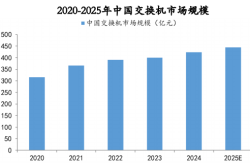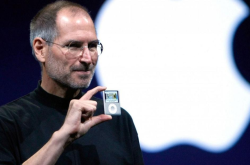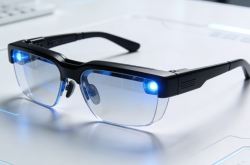Gen Z Buys Smartphones: From Offline to Online, Then to Riders
![]() 09/25 2024
09/25 2024
![]() 441
441
Autumn is always the busiest season for the consumer electronics industry, with the two major Chinese and American technology giants Huawei and Apple "going head-to-head" on the same stage. Their new products, the Mate XT and iPhone 16, engage in a "face-to-face battle".
It's not just the "tech Spring Festival Gala" that's lively; in the field of instant retail, the days when leading tech companies launch their new products are often the moments when the battles between platforms are the fiercest.
After Apple's new product launch, according to media reports, in addition to traditional e-commerce platforms like JD.com and Tmall, instant retail platforms such as Meituan Flash Delivery and Ele.me were also deeply involved. Kuaishou also competed for the sale of Apple's new products in the form of "hour-long service".
It can be seen that not only traditional e-commerce platforms but also instant retail platforms and short video and live streaming platforms are almost all participating in this round of consumer electronics "first launch grab, hour-long delivery" war.
Opening an online food ordering platform to "order a phone" is no longer a technological fantasy, but a real-life scenario facilitated by leading platforms.
An obvious trend is that more young consumers are starting to buy consumer electronics through instant retail channels, which is profoundly influencing the development of the consumer electronics and physical retail industries, and also has extended industrial value for the instant retail industry.
Consumption Demand Changes Rapidly
In the PC Internet era, frequent online shoppers regarded traditional e-commerce as the primary or even sole channel for purchasing 3C electronics.
However, with the acceleration of urbanization in China, the new generation of young people have gradually adapted to fast-paced urban life; the high penetration of smartphones and the rapid emergence of consumer-grade applications and related infrastructure have greatly facilitated consumers' demand for "immediate purchase and immediate use."
Therefore, when faced with different channels that offer the same product and quality, young consumers increasingly prefer the one with the fastest delivery time.
Xiao Gao (a pseudonym), a white-collar worker in his 30s working for a foreign company in Shanghai, uses instant retail platforms almost every week, not just for ordering food but also for buying groceries, charging cables for his phone, and even small appliances. "Now I'm used to ordering takeaways, and when I open my phone, I might just check what good deals are available on the food delivery platform," he said.
According to Accenture's report "Focusing on China's Post-95s Consumer Group," the younger generation is more concerned with "speed," with over 50% of post-95s hoping to receive their purchases on the same day they order them and willing to pay extra for faster delivery.
Taking consumer electronics as an example, the "White Paper on Instant Retail in the Consumer Electronics Industry" (hereinafter referred to as the "White Paper") released this year shows that instant consumption of mobile phones is more popular among post-95s and post-00s, with Gen Z accounting for nearly 40%. Currently, the penetration rate of post-00s consumers on Meituan Flash Delivery is as high as 48%.
Instant retail has emerged as a new consumption trend and has been greatly extended in terms of demand fulfillment.
When instant retail first emerged in 2018, consumers' understanding of it was mainly focused on meeting emergency consumption needs, such as wanting a cold drink on a hot day or needing an umbrella on a rainy day. However, the current consumption demand is showing a trend of "continuously breaking through boundaries" in terms of both breadth and depth.
In terms of consumption scenarios, important holidays generate gift-giving demand, and major e-commerce promotion events generate more sales due to significant discounts. Additionally, some consumers buy disposable items while traveling or staying in hotels, which also accounts for a significant proportion of sales.
In terms of product categories, consumers have expanded from simply ordering takeaways on instant retail platforms to buying phones and household appliances. When purchasing phones and computers, they also habitually select and purchase electronic accessories.
Mr. Chen, an executive at an internet company working in Shenzhen, said he first used an instant retail platform when he forgot his phone charging cable while traveling and ended up ordering one through food delivery. "After that, I also bought an iPhone 14 and ordered an air conditioner for my home during the summer vacation through the food delivery platform," he said.
Behind the widespread extension of demand lies the "trinity" development of consumption, store supply, and platform service capabilities.
For example, when the iPhone 16 was first launched this year, in previous years, Meituan Flash Delivery's pre-sale of new products was limited to participation from over 1,000 Apple stores in first- and second-tier cities nationwide. This year, the number of stores supporting the first batch of pre-sales doubled compared to last year, with a focus on third- and fourth-tier cities and some lower-tier markets such as counties and townships. For newly covered users in lower-tier markets, the time to receive new products has been significantly shortened.
Moreover, in the past, instant retail platforms were mainly dominated by individual convenience stores and fruit and vegetable shops, but in recent years, new channels and brands have continued to join instant retail, and most of them are leading chain brands that are experiencing instant retail for the first time.
When the iPhone 16 was first launched this year, the number of Apple Authorized Resellers partnering with Meituan Flash Delivery increased from 4,700 last year to 7,000. The number of Huawei Authorized Stores and Huawei Smart Life Experience Stores has also reached over 4,300, distributed across 343 cities nationwide.
As consumption demand changes rapidly, platforms and supply sides are also evolving accordingly.
New Supply Connects with the Larger Ecosystem
During the rapid growth of instant retail, the physical retail industry has also entered a new cycle.
Since 2020, new online models such as community group buying and fresh food pre-warehousing have emerged in large numbers. Coupled with the intensified competition for market share among e-commerce platforms due to changes in the landscape, the new and old online formats continue to divert consumers, and physical retail has struggled to withstand the intensifying competition in the market.
As a result, traditional foreign-invested supermarkets, once representing "advanced productivity," have repeatedly closed in China, and leading Chinese supermarket chains have also been caught in a vortex of declining revenues.
'In the past, instant retail lacked supply, but now, many malls, stores, and traditional channels in cities need new outlets. It's a comprehensive force,' said a professional.
In the face of fiercer competition, the transformation of physical retail is imminent, and offline stores urgently need new increments and models.
This year, the trend of "overhauling" and "optimizing" supermarkets has emerged as a new fashion. Traditional supermarkets are "bringing back" offline traffic through systematic optimization of merchandise, services, and decoration, while deploying instant retail channels to acquire online increments is an integral part of the transformation of physical retail.
The cooperation between physical retail and instant retail platforms can be described as a win-win situation. It not only helps platforms continuously attract new users and diversify revenue structures but also opens up online traffic and service ecosystems for merchants, assisting them in "optimizing" their online businesses while bringing in new increments.
For example, Meituan Flash Delivery has launched a full-cycle, three-dimensional marketing matrix for new products targeted at digital and home appliance KA merchants. Its "New Product Channel" has become an important scenario for brands to reach new users through centralized traffic from the "Browse + Shop" hub. At the same time, Meituan Flash Delivery also values the help that new models provide to merchants: During the Double 11 shopping festival in 2023, Lenovo conducted a 4-hour live broadcast on Meituan Flash Delivery, with live broadcast transactions accounting for 44.8% of the merchant's overall transactions for the day.
According to the author's understanding, there is an Apple Authorized Reseller in Xishuangbanna, Yunnan Province, which has been in operation for nearly a decade. After joining Meituan Flash Delivery in 2021, the store's sales shifted mainly to online, with over 60% of current sales coming from instant retail.
The store manager, Mr. Yang, revealed that on September 20th, the store sold over 30 orders through food delivery channels, with sales increasing by about 30% compared to last year. In his view, there are many diverse consumption scenarios for instant retail, such as someone getting their phone wet during the Water-Splashing Festival and needing to order an emergency replacement or tourists finding discounted Apple products in-store, placing an online order with a coupon, and then picking up the phone after confirming the model in-store.
In addition to Xishuangbanna, the habit of instant retail consumption, especially ordering 3C electronics through food delivery platforms, has penetrated into third- and fourth-tier cities and even larger lower-tier markets.
Connecting new supply with new channels not only adds new product categories to the platform and further expands the service coverage of instant retail but also opens a door for merchants. Behind this door lies a platform's accumulated traffic ecosystem, brand reputation, and systematic retail service capabilities.
Systematic Warfare
According to the survey data in the White Paper, the consumer electronics category has experienced rapid growth in the instant retail market over the past three years. It is estimated that the compound annual growth rate from 2021 to 2026 will reach 68.5%, and the scale of the instant retail consumer electronics industry will exceed 100 billion yuan in 2026.
Behind the continuously growing and increasingly vast market size are the entry of more platforms, the extreme desire of physical merchants for online increments, and the ever-changing and growing demands of consumers. These factors are pushing the instant retail market to the trillion-yuan scale.
A larger market is also accompanied by fiercer competition. From a consumption habit perspective, for relatively low-frequency purchases like "replacing a new phone," users will only choose one platform to order a phone, but this reveals the differences in market share and consumption habits between platforms.
Looking solely at consumption outcomes, instant retail platforms introduce a large number of users at the front end and connect with a vast number of merchants at the back end, playing the role of a "facilitator" in prompting consumers to place orders. However, the extremely high requirements for instant retail's systematic retail capabilities on platforms should not be underestimated.
Taking delivery as an example, when consumers urgently need to purchase a daily necessity or electronic product, aside from considering business coverage, platforms must ensure timeliness, optimize delivery routes for riders to save time, and minimize uncertainty factors such as accident-prone roads, construction detours, or accurately locating a specific unit building in a complex residential area.
The test of delivery timeliness not only requires a sufficiently large scale of instant delivery capacity but also demands that the platform possesses sufficient technical expertise and road network planning experience, posing a dual challenge for both human resources and technology.
Through this round of simultaneous reinforcement of instant retail by Apple and Huawei during the new product season, it is once again proven that instant retail is not merely a point-to-point battle between a single phone model or a branded chain store but rather a "system vs. system" war involving operations, technology, and fulfillment, testing and honing the systematic retail capabilities of platforms.
In 2022, Meituan Flash Delivery, which was originally part of the innovation business, was integrated into the core local commerce business, significantly elevating its strategic position. Additionally, platforms such as Taobao, JD.com, and Douyin have placed greater emphasis on the layout and development process of hour-long delivery services in the new round of e-commerce competition.
While the entry of leading platforms has indeed made the instant retail battlefield livelier, only platforms that solidly hone their retail capabilities are likely to emerge victorious in the long-term battle of instant retail.








